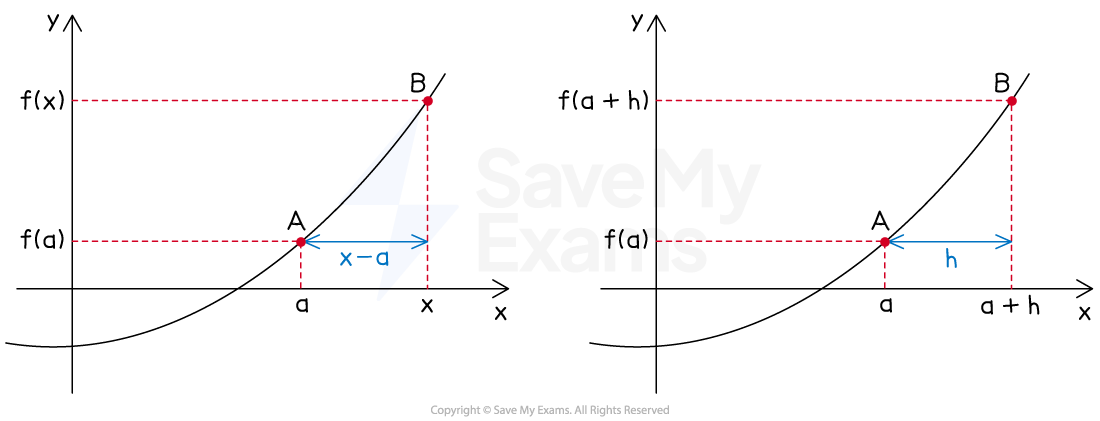Average Rate of Change (College Board AP® Calculus AB) : Study Guide
Average rate of change
What is the average rate of change?
The average rate of change between two points on a graph, is the slope of the line segment joining the two points
The slope is equal to the change in
-values, divided by the change in
-values
The average rate of change between
and
is therefore
This means that the average rate of change is undefined at a point where the change in
is zero for a given change in
How can I write the average rate of change using function notation?
For a function
,
a point with
-coordinate
will have
-coordinate
a point with
-coordinate
will have
-coordinate
The average rate of change can therefore be written as
If an
-coordinate of
is used for the first point, and the second point lies
units to the right,
the second point will have an
-coordinate of
The average rate of change can therefore also be written as

Worked Example
Let be the function defined by
.
Find the average rate of change between the point with an -coordinate of -1 and the point with an
-coordinate of 2.
Answer:
The average rate of change between two points can found using
Evaluate the function at the two points and simplify
Simplify
Average rate of change = 11

You've read 0 of your 5 free study guides this week
Unlock more, it's free!
Did this page help you?

